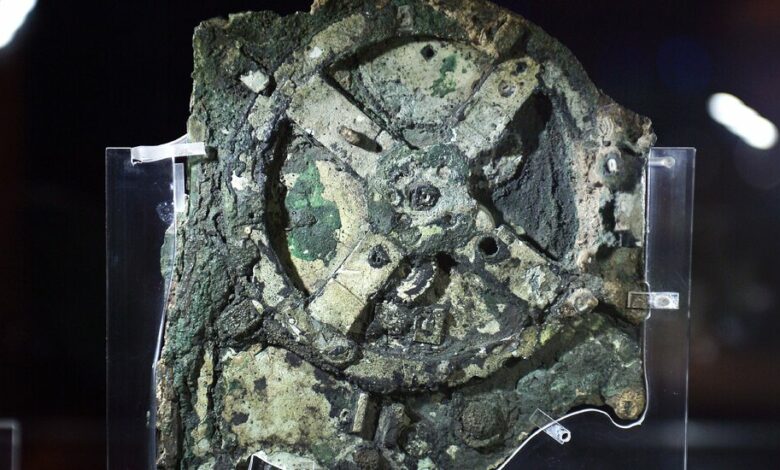Cosmic research provides hint of mysterious ancient computer

The Antikythera Mechanism, an ingenious calculating machine created 2,200 years ago, has inspired awe and enchantment since it was discovered in 1901 in a shipwreck off a Greek island. For generations, researchers have unraveled many mysteries surrounding the device, often described as the world’s first analog computer, but much remains unknown.
a study published this month in The Horological Journal challenges a core assumption about the mechanism that could upend understanding of the complex timepiece’s form and function. But rather than using standard tools of archaeology, the scientists reached their conclusions by drawing on the methods of gravitational wave astronomy, a field that tunes into subtle ripples in spacetime caused by cosmic disruptions.
Graham Woan, a professor of astrophysics at the University of Glasgow, and Joseph Bayley, a research associate there, said the mechanism’s calendar ring, a circular feature that survives only in fragments, once contained 354 holes, corresponding to a 354-day lunar calendar. That finding conflicts with previous research that identified the ring as a solar calendar lined with 365 holes.
“It’s a somewhat controversial idea,” said Dr. Woan, who acknowledged that he and Dr. Bayley are not experts on the device. “But the evidence is pretty clear.”
If the calendar ring does indeed represent a lunar year, it would invalidate current models of the mechanism. For this reason, some Antikythera scholars remain skeptical of the new study.
“It’s just wrong,” said Tony Freeth, an honorary professor at University College London and an expert on the Antikythera mechanismHe noted that a much more accurate lunar calendar, based on the 19-year Metonic cycle, was already built into the mechanism.
“Why would you put a second lunar calendar on the mechanism when you’ve already gone to a lot of trouble to create a lunar calendar that is very accurate and sophisticated?” said Dr. Freeth.
The Antikythera mechanism is not without controversy and speculation, partly because it is so way ahead of his time in the second century B.C.E. The intricate network of gears, dials, and plates produced a model of the cosmos that tracked the cycles of the moon, sun, planets, and constellations, while also predicting eclipses and marking the timing of athletic competitions such as the ancient Olympic Games. The artifact also inspired the eponymous “Dial of Destiny” in the latest Indiana Jones film.
For decades, researchers have considered the calendar ring as a solution to the mathematically tricky solar year, which lasts 365.24 days. Just as leap years are built into our calendars, the holes in the ring would allow it to be manually rotated by one day every four years, keeping it from drifting off course.
The solar model was first questioned in a Study 2020 by a team of researchers and enthusiastsBy analyzing x-ray images of the remaining holes in the mechanism, the study claimed to “reject the centuries-old assumption of a 365-day calendar on the Antikythera Mechanism, proposing instead that it is a 354-day lunar calendar.”
Dr. Woan and Dr. Bayley thought that the methods they used to analyze gravitational waves could place tighter constraints on the initial number of holes.
“It is such a well-defined and clear problem that we couldn’t help but analyze it in the same way as an astronomical problem,” said Dr. Woan.
They took measurements of the remaining holes, including size and distance, using their astronomical software. The results strongly suggested a complete ring with 354 holes.
Mike Edmunds, emeritus professor of astrophysics at Cardiff University in Wales and chair of the Antikythera Mechanism Research Project, said there seemed to be “no obvious reason to doubt” the study’s estimate of 354 holes. However, he remained unconvinced that the mechanism had a redundant lunar calendar.
“The suggestion that 354 represents a lunar calendar seems to have no other support from within the mechanism — it is not at all clear how it would work and how it would relate to the markings on the face of the calendar ring,” Dr. Edmunds said. “But the determination of the count may tell us something about the level of precision in construction that was considered necessary and used by the builders of the mechanism.”
Whatever the original nature of the calendar ring, the new research shows that the Antikythera mechanism is not a static remnant but a dynamic puzzle with many missing pieces yet to be found.
The mechanism “keeps giving us new things,” Dr. Freeth said. “It’s extraordinary. Year after year we’ve found these amazing things in it.”




